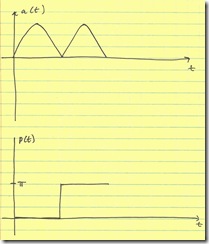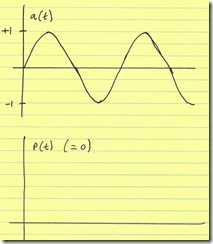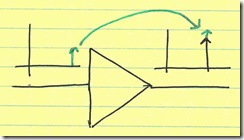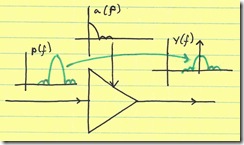I’ve heard for the last 10 years or so that polar modulation will give spectrally-efficient modulation formats (OFDM, CDMA, etc.) the PA efficiency that they so lack nowadays.
I agree: polar modulation will give a boost in efficiency—when several problems are solved. Here are the challenges that plague polar modulation
Bandwidth
Polar modulation takes band-limited I & Q signals and composes an amplitude signal a=sqrt(I^2 + Q^2) and a phase signal p = atan(Q/I). These are heavily non-linear functions. As a result, the resulting bandwidth of a and p are much larger than I/Q.
In addition, band-limiting a & p can have deleterious effects on the resulting RF signal. In order to maintain spectral masks (contain the near-in spectrum), multiples of the desired bandwidth need to be preserved in a and p.
We are essentially taking band-limited signals and decomposing them into wide-band signals (so that we can amplify them efficiently) to then recompose them into a final band-limited signal (I+jQ = a*exp(j*p))
A not-so good example of this bandwidth effect is the case where I=cos(wm*t) & Q=0. Then, the a=|cos(wm*t)| and ph = pi*sgn[cos(wm*t)]:
However, this is not such a good example, since in some cases, this discontinuity in amplitude and phase can be reduced by allowing the amplitude to be positive and negative (i.e. a double-balanced mixer) and transferring the phase reversal from p to a:
Unfortunately, this cannot be done with a transformer-coupled class-D configuration:
Leakage
Another problem that plagues power modulators is signal leakage. Normally, the input to a power amplifier (PA) is a replica of its output, only lower in power. If this input then leaks to the output of the PA, no harm is done with respect to spectral masks:
Polar modulators, however, have two inputs: amplitude a and phase p—neither of which look anything like the desired output.
The amplitude path is generally off-frequency (not with the RF carrier). However, the phase path p is modulated with the RF carrier and can leak through to the output. Note that this is a wide-band signal that will screw up the spectral mask:
In effect, this means that the dynamic range of the PA is limited by leakage of the phase signal. Note that this can greatly hinder power control—which I consider to be the true challenge of supply modulation.



